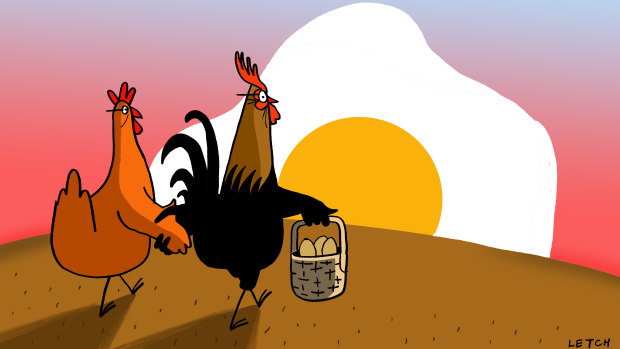This was published 1 year ago
Opinion
I’m retired and have never invested before. Where should I put my cash?
Paridhi Jain
Money contributorI’m in my 60s and retired. I have paid off my home, and have a few properties. I have a sizable lump sum of money that I could put into some investments as I don’t have any immediate need for the cash. I’ve never invested in the sharemarket as I had a self-managed super fund, so I worry about the volatility of the sharemarket, especially given my age, but I don’t want any more real estate because of the maintenance. I have that heard gold is a safe investment, so I considered putting everything into gold, but I’m confused and unsure how to move forward with the lump-sum. Any clarity you could provide would be appreciated.
Let’s start with going through some investing fundamentals, which may help address some misconceptions and give you more clarity and confidence in your investing plan:

As you approach your retirement years it’s important to think carefully about how you want to spend your money.Credit: Simon Letch
Your investing time-horizon matters. Volatility can be scary, but it’s important to remember that market fluctuations can be quite dramatic in short-term time periods. This can generate a lot of news and panic.
You might remember big market downturns like the GFC back in 2008 and even more recently during COVID-19. Both generated countless headlines about how much money investors had lost.
However, if you look at the market over the long term, you’ll see that in general, the market trends upwards. So, if you stayed invested for a long enough period of time, you would eventually be able to ride-out the volatility.
Now, of course no one can predict how long it will take for a market to recover. For younger investors, this is less of a concern because they can afford to stay invested for longer periods of time and wait for the market to recover.
Once you achieve financial independence, it can be easy to fall into the trap of investing for the sake of it and accumulating wealth on autopilot.
However, older investors may have an intention to use that capital sooner, to support them during retirement years. So you may not want to wait 10 years for the market to recover.
This is why usually, as investors get older, their portfolios shift towards a more defensive mix, with a greater percentage allocated towards lower-volatility assets like bonds and gold. However, the allocation to growth assets does not reduce to zero.
This is because you may still have to financially support yourself for a few decades. Therefore, your assets need to be able to sustain you for that period.
Your overall portfolio mix matters. Firstly, you want to think about your investment portfolio as a whole and not just the lump-sum you have available to invest in isolation.
Secondly, you don’t have to put it all in one place (for example, real estate or gold). In fact, best practice is to diversify across different asset classes and have a little in each.
Every asset class has certain advantages and disadvantages. When you mix it up a bit, you get exposure to the benefits of each, and also protection from the risks of each.
Today, it’s easier to diversify than it used to be. ETFs and index funds are one option that can give you instant exposure to different asset classes, industries and geographies.
They are also a low-maintenance and comparatively beginner-friendly way to invest, since they remove the need to analyse, select and manage investments in specific companies.
Your investment goals matter. Once you achieve financial independence, it can be easy to fall into the trap of investing for the sake of investing and accumulating wealth on autopilot without any clear purpose.
However, having a clear purpose for your investments can help provide clarity in designing an investment plan. When you know the end-goal, it’s easier to identify which options align with it.
Also, getting clear on what you’d like your retirement years to look like may reveal that in fact you don’t want to invest everything because there are things you’d like to use the money for.
Here are some things that will help you get more clarity on a way forward:
- Review your total asset position and your current portfolio mix. Is there an asset class you’re heavily exposed to already? If you invested the entire lump-sum in a single asset like gold, how would that impact your overall portfolio? This will help you see how your overall portfolio mix needs to change to achieve the risk level you’re comfortable with.
- Reflect on your goals for the next few years. What do you want retirement to look like? What might you like to use the money for in the next three to five years? How much money would you like to keep invested for a longer period, like 10 years or more? This will help you determine your investing time horizon
Once you’ve done the above, ETFs could be one way to achieve your desired risk-return balance in a low-maintenance fashion.
Paridhi Jain is the founder of SkilledSmart, which helps adults learn to manage, save and invest their money through financial education courses and classes.
- Advice given in this article is general in nature and is not intended to influence readers’ decisions about investing or financial products. They should always seek their own professional advice that takes into account their own personal circumstances before making any financial decisions.
For expert tips on how to save, invest and make the most of your money, delivered to your inbox every Sunday, sign up for our Real Money newsletter here.